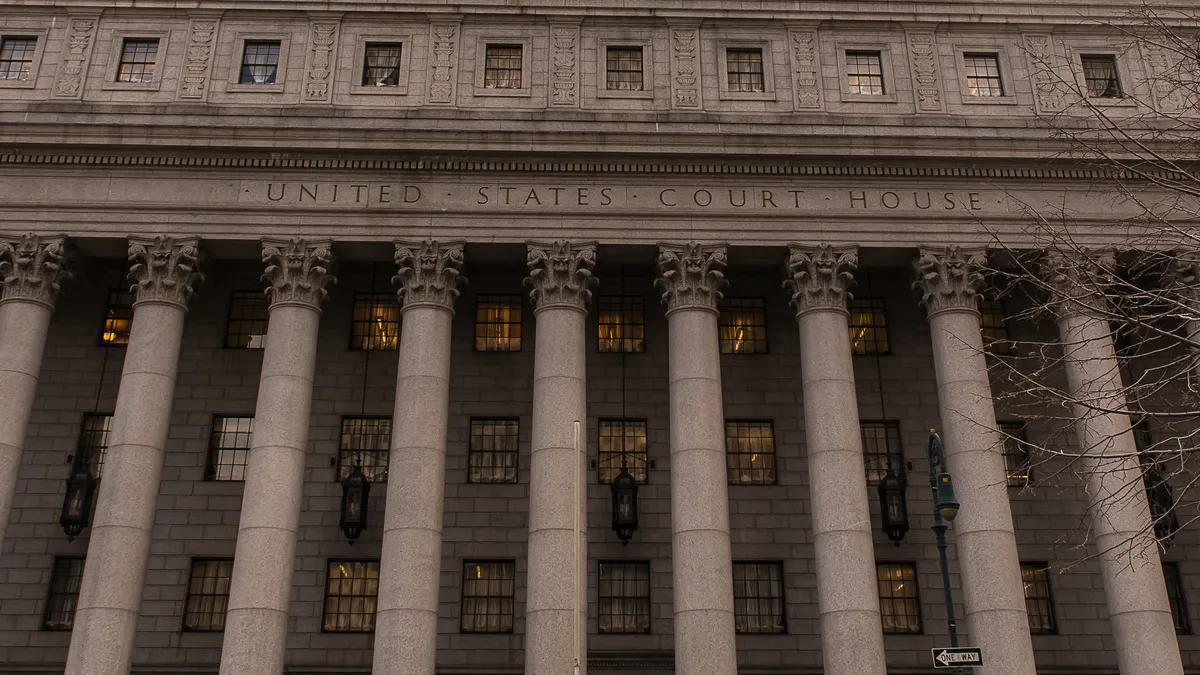Throughout the past four years, employers have sought clarity on federal regulations governing joint-employer status under the Fair Labor Standards Act (FLSA). Last week, a federal judge's decision added yet another wrinkle to this area of employment law.
In January, the U.S. Department of Labor (DOL) published its final rule limiting joint-employer liability under the FLSA through the adoption of a "four-factor balance test" that it said should allow employers to determine whether they are a joint employer of another employer’s employees. The rule also stated that additional factors may be considered in addition to the test, "but only if they are indica of whether the potential joint employer exercises significant control over the terms and conditions of the employee's work."
The final rule arrived nearly three years after DOL withdrew a set of Obama-era Administrator Interpretations, a type of informal guidance, on joint employment. But in a Sept. 8 decision, the U.S. District Court for the Southern District of New York held that the latest final rule conflicted with the FLSA and was "arbitrary and capricious" because DOL "failed to adequately justify its departure from its prior interpretations" and failed to account for the cost of the rule to workers (State of New York, et al. v. Scalia, No. 1:20-cv-01689 (Sept. 8, 2020)).
However, the court did not strike down all of the final rule. It allowed DOL's "non-substantive revisions" to so-called horizontal joint employer liability law under the FLSA to stand while vacating the department's standard for vertical joint employer liability. This distinction may be important for employers to understand as they process the outcome of the ruling, management-side employment attorneys told HR Dive.
Court splits on vertical, horizontal joint employment regs
In its final rule, DOL said it "proposed only non-substantive revisions" to one of the two joint-employment scenarios, known as horizontal joint employment, in which one employer employs a worker for one set of hours in a workweek, while an associated employer employs the same worker for a separate set of hours in the same workweek.
Vertical joint employment, on the other hand, identifies a scenario in which an employee has an employer who "suffers, permits, or otherwise employs the employee to work," while another individual or entity simultaneously benefits from that work. The four-factor balance test would be applied to situations falling under this scenario, DOL said.
The example given in the final rule to illustrate horizontal joint employment may not have been as useful to employers and employees as the examples given to illustrate vertical joint employment, said Charles H. Morgan, partner at Alston & Bird, because horizontal joint employment is "relatively straightforward." In fact, most of the illustrative examples explored in DOL's final rule cover vertical joint employment, he added.
"In terms of the fact scenarios that the Department of Labor is saying [are] vertical, I think that is the more commonly litigated issue," Morgan said.
But the court said that DOL's rule for determining vertical joint employer liability had two flaws: DOL relied on the FLSA's definition of "employer" as the "sole textual basis for joint employment liability"; and the agency "distinguished the test for whether an entity is an 'employer' from the test for whether the entity is a 'joint employer.'" Both decisions contradicted the FLSA's text; prior DOL interpretation of the FLSA and the Migrant and Seasonal Agricultural Workers Protection Act; and prior case law, the court said.
"The core of the whole decision was that the court disagreed that the regulation properly tracked the language of the Act," Morgan said. "The court felt like the regulation focused only on the definition of employer and didn't consider the definition of employ and employee, and the court felt those were necessarily broader than what the regulation was doing."
How DOL could respond
The agency could appeal the decision in Scalia to the 2nd Circuit, but that may be a lengthy process, Susan Harthill, partner at Morgan Lewis, told HR Dive.
But another recent court challenge that impacted DOL regulations may provide some insight into what the agency could do next on joint employment, Harthill said. On Sept. 11, DOL issued an update to its final rule implementing the Families First Coronavirus Response Act after a federal court ruling that struck down some aspects of the original rule.
"That is always an option," Harthill said of the possibility that DOL might issue a similar update after the joint-employer ruling, though she said she isn't sure whether the agency would do so via notice-and-comment rulemaking. The revised FFCRA rule did not require notice and comment.
Take a 'wait-and-see approach'
Employers that restructured their approach to joint employment following the initial release of the final rule may want to consult with counsel about whether they need to revisit that decision, Harthill said. Otherwise, employers "may want to take a wait-and-see approach" regardless of whether DOL decides to appeal the court's ruling, she added.
Agency interpretations like those in the joint-employer rule are still helpful to employers, Morgan said, because they provide an idea of what the agency believes and plans to enforce. "What strikes me is that this regulation … is intended to guide employers and employees on how to comply with the law," he added. "It is certainly possible for courts to simply disregard the interpretation. They really didn't need this decision voiding it. But in the future, courts can and do disregard agency interpretations if they feel like they are not sufficiently tied to the language of the statute."
But that doesn’t mean the rule's illustrative examples can necessarily serve as a legal defense, Morgan said; "I really do think most of these examples track what the law is, [but] you just can't cite these examples anymore as a basis for your argument."






















